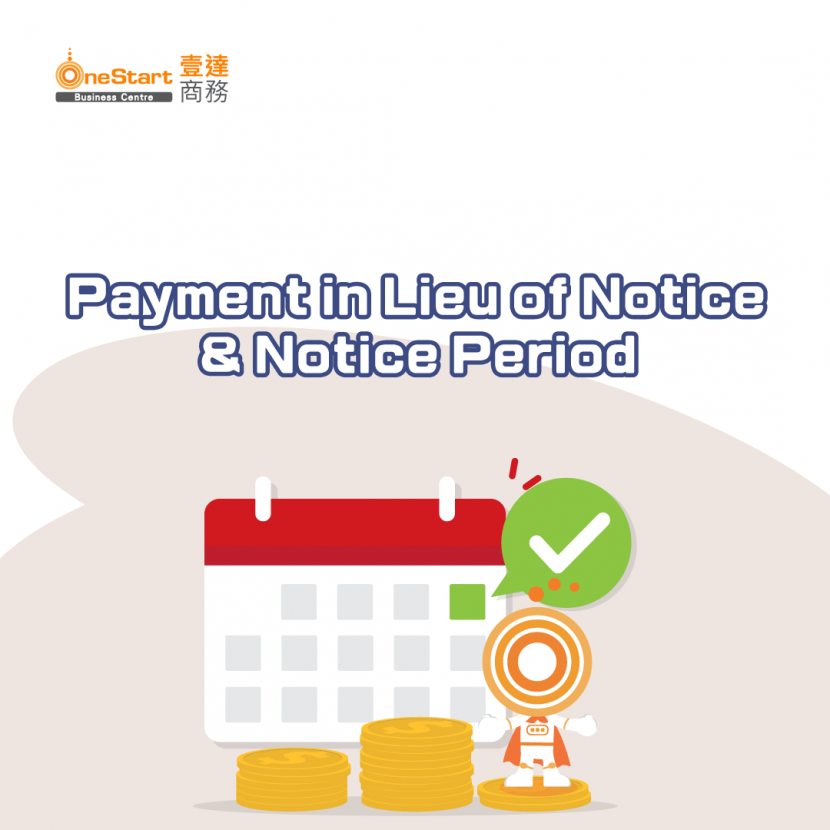Related Article:
How to Help Employees File Taxes? Tutorial on Employer Tax Return
Profit Tax Computation in Hong Kong and Deductible Items
Table of contents |
Employers and employees in Hong Kong need to understand how to calculate "Payment in Lieu of Notice" and "Notice Period." They are important for the operation and taxation of companies when terminating employment contracts. In this article, you can reduce unnecessary losses by knowing questions like how much notice is required and how to calculate it.

Payment in Lieu of Notice
When an employer and employee want to end their employment relationship, they typically set a "notice period" as a buffer to protect the rights and interests of both parties. This allows for a smooth transition and prevents disruption to business operations.
However, if the relationship has deteriorated to the point where maintaining any cooperative relationship is no longer possible, either party has the right to offer a sum of money as compensation in lieu of the notice period. This compensation is known as "Payment in Lieu of Notice."
How is Payment in lieu of notice Calculated?
"Payment in Lieu of Notice = Average wage × Notice period"
Calculating payment in lieu of notice involves understanding two components: the "Average wage" and the "notice period."
Average wage
According to the Employment Contract, the average wage is calculated by taking the monthly or daily Average wage over the past 12 months, starting from the date the employee submits a resignation letter or the company issues a dismissal letter.
The Average wage includes commissions, overtime pay, double pay, and other components. Payment in lieu of notice is usually higher than the monthly or daily salary. The specific use of monthly or daily wage depends on the unit of the notice period specified in the contract agreement.
Example
If employee A's past wage (including commissions) is HK$500,000, and the notice period specified in the contract is 14 days, and he took a total of 2 days of unpaid sick leave in the past year, the calculation for the average wage and payment in lieu of notice would be as follows:
Average wage = HK$500,000 ÷ (365-2) = HK$1,378
Payment in lieu of notice = HK$1,378 × 14 = HK$19,292

Notice Period Requirements
The notice period specified in the employment contract cannot be less than the basic requirements of the Employment Ordinance. If the employment contract does not specify a notice period, the basic requirements of the Employment Ordinance will be applied. The following table shows the basic requirements for notice periods and payment in lieu of notice:
| Employment Situation | Notice Period | Payment in lieu of notice |
| 1st month of the probation period | Not Required | Not Required |
| After 1st month of the probation period (agreement made in the employment contract) | Notice period specified in the contract (not less than 7 days) | Required |
| After 1st month of the probation period (without specific agreement made) | Not less than 7 days | Required |
| No probation period/completion of probation period (agreement made in the employment contract) | Notice period specified in the contract (not less than 7 days) | Required |
| No probation period/completion of probation period (without specific agreement made) | Not less than 1 month | Required |
Terminating an employee without Notice Period or Lieu of Notice
Terminating an employee without giving notice period or payment lieu of notice is only allowed in specific circumstances. Examples include:
- Willful disobedience of lawful and reasonable orders
- Misconducts
- Fraud or dishonesty
- Habitual neglect of duties
Circumstances in which an employer cannot dismiss an employee:
- Confirmed pregnancy and pregnancy notification issued;
- During paid sick leave;
- Providing evidence or participating in inquiries related to legal proceedings under the Employment Ordinance, Occupational Safety Laws, etc.;
- Participating in trade union or trade union activities;
- During a work injury period.
Terminating an employee without sufficient justification may be considered unlawful and may require the employer to provide compensation. Employers should carefully consider their actions before proceeding with any termination.
Payment in Lieu of Notice and Taxation
- Payment in lieu of notice paid by the employer in a tax year needs to be reported to the Inland Revenue Department. More information can be found on the employer's tax return.
- Notice pay paid by an employee for early resignation cannot be claimed as a deduction for salaries tax.

Conclusion
Payment in lieu is an important aspect often overlooked by Hong Kong companies. Understanding payment in lieu is crucial for the operation and taxation of companies. OneStart's professional accounting team has years of experience and is trusted by customers. OneStart provides one-stop business support. If you want to learn more about corporate taxation, please call 3575 6888 or WhatsApp OneStart Business Consultants for more information.
Click to WhatsApp OneStart:
Know More About Our Services:
 |
 |
 |













